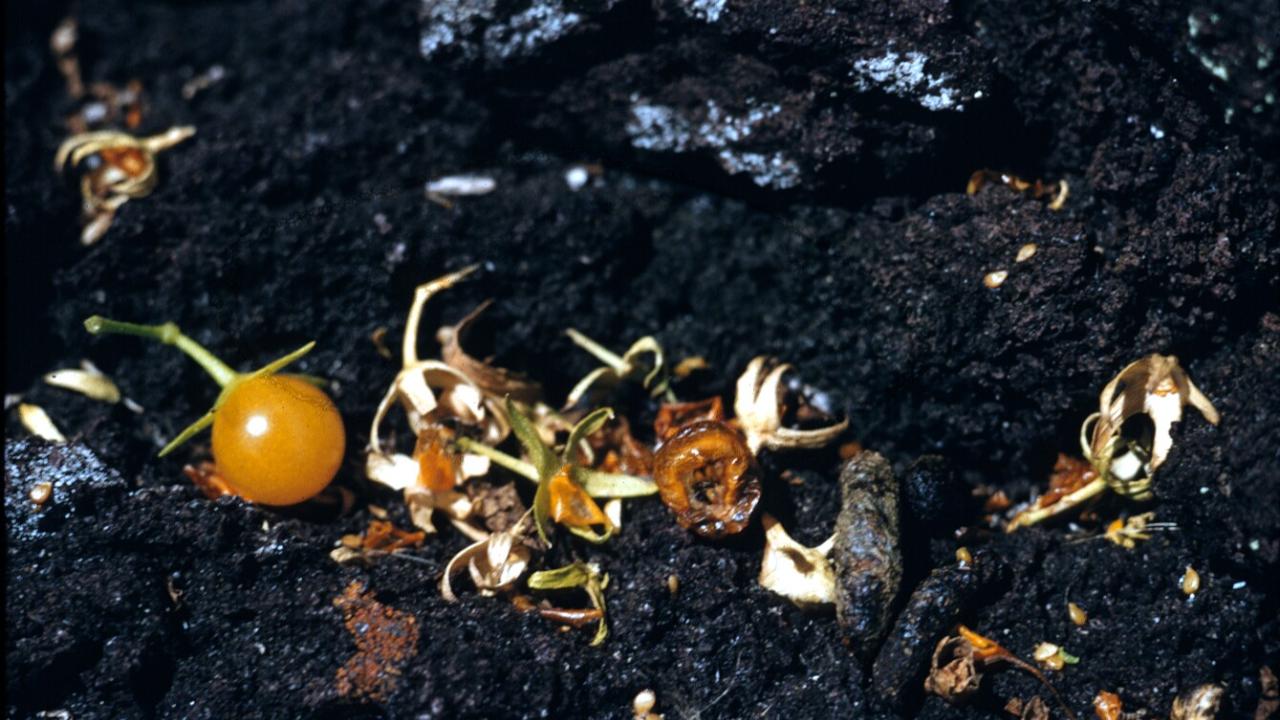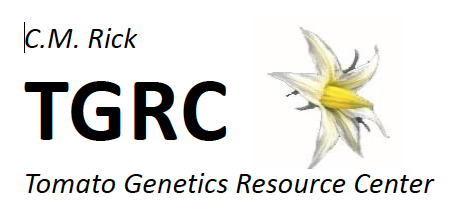
Galapagos mockingbird feeding on native tomatoes
One of the mysteries about wild tomatoes is how they migrate to new geographic regions, and in particular what animal(s) are responsible for their seed dispersal. Two wild tomato species, Solanum galapagense and S. cheesmaniae, are found only in the Galapagos Islands. It has long been known that their seed do not germinate readily without overcoming dormancy, either through chemical treatment, or through digestion by an unknown animal. Rick and Bowman (1961) showed that passage through the gut of the Galapagos tortoise was highly effective at overcoming dormancy and promoting germination. However there have been no direct observations of tortoises feeding on tomato fruits in the wild, and even if they did, it would not explain how Galapagos tomatoes reached most of the islands and islets in the archipelago, including ones not populated by tortoises. There is evidence of possible consumption by rodents (see photo), but whether they play any role in seed dispersal is unknown, as the only native rodent, the Galapagos rice rat, is not widespread. In this video from July 2019, graduate student Matt Gibson (Indiana University) recorded a Galapagos mockingbird picking up fruit of S. cheesmaniae, providing direct evidence for seed dispersal by this native bird.
